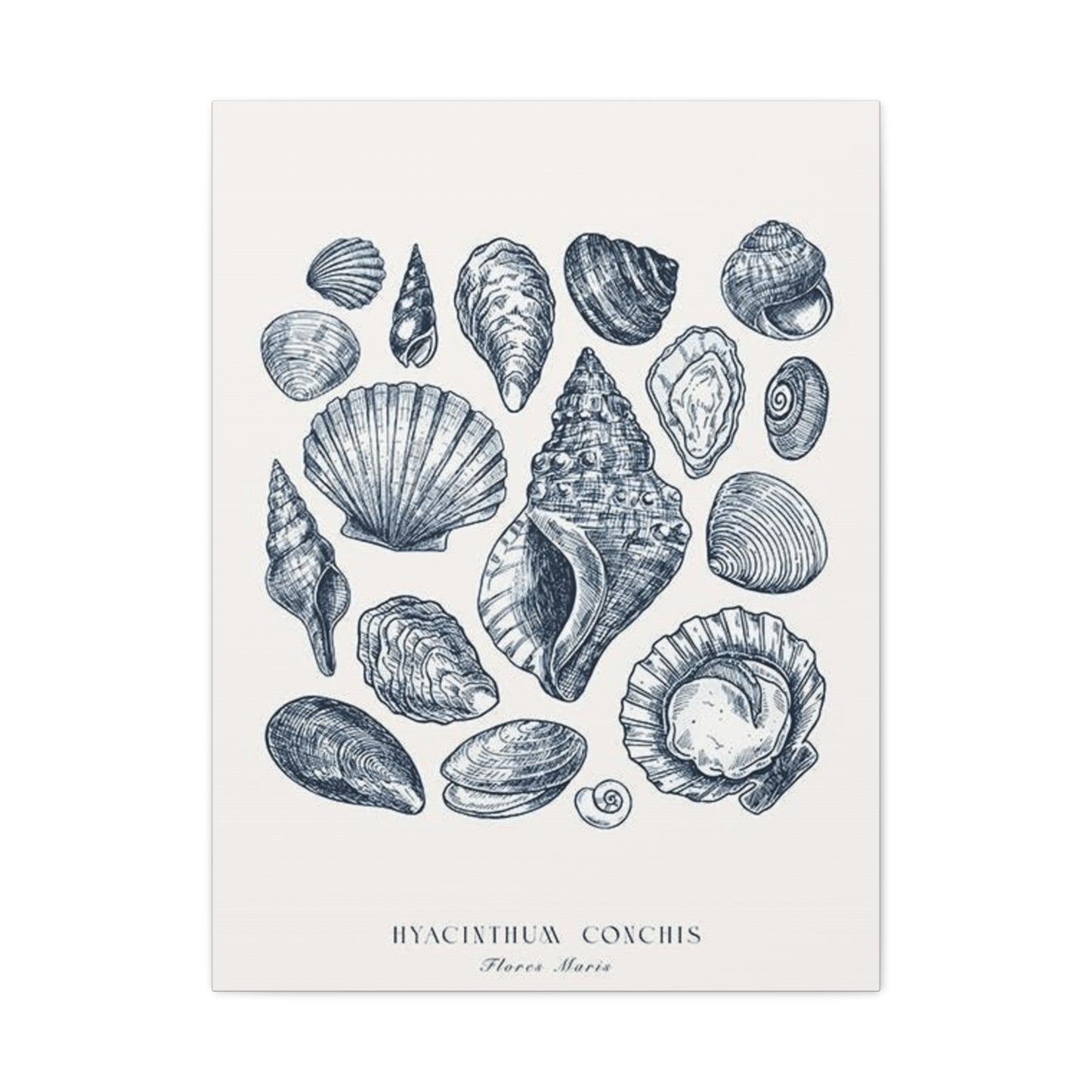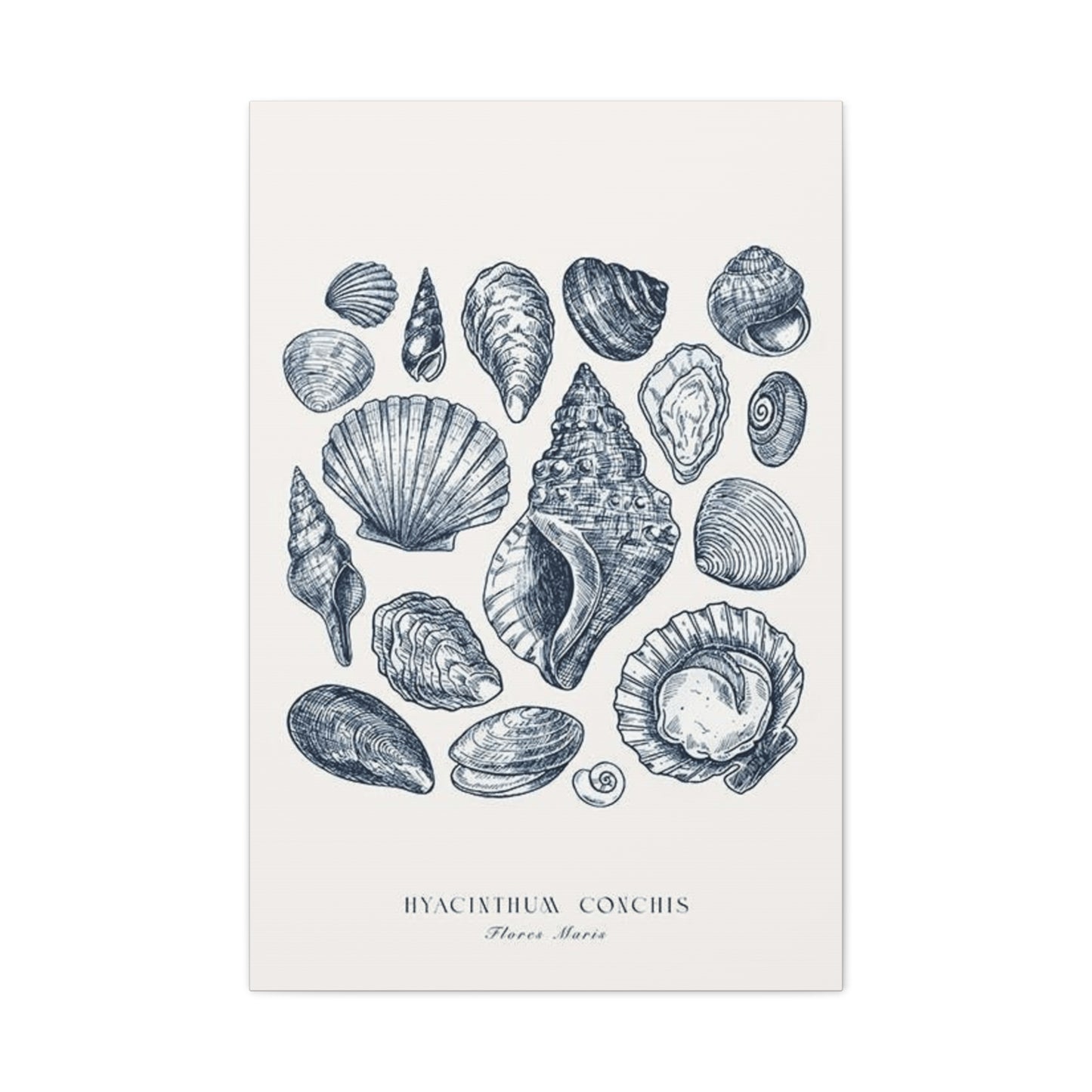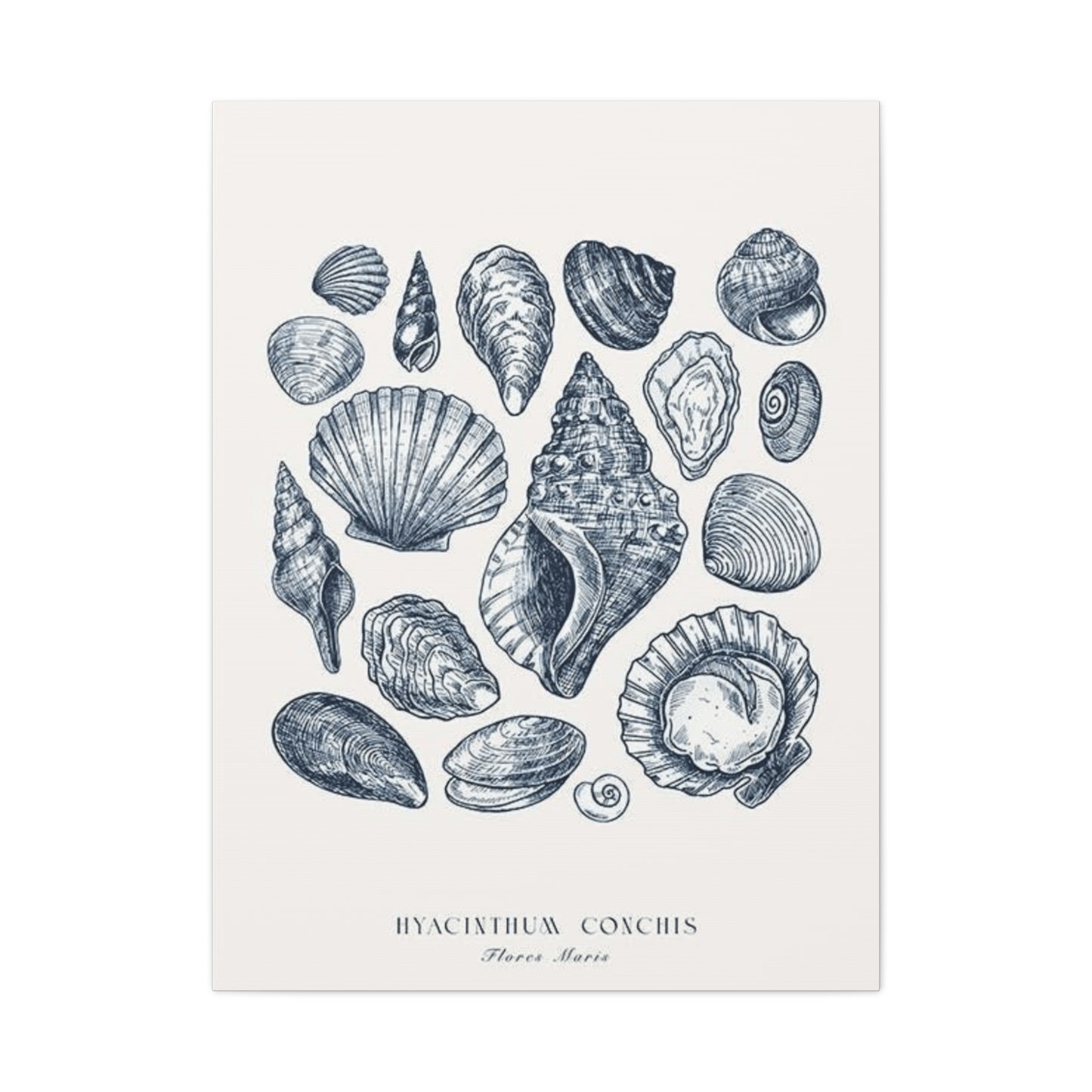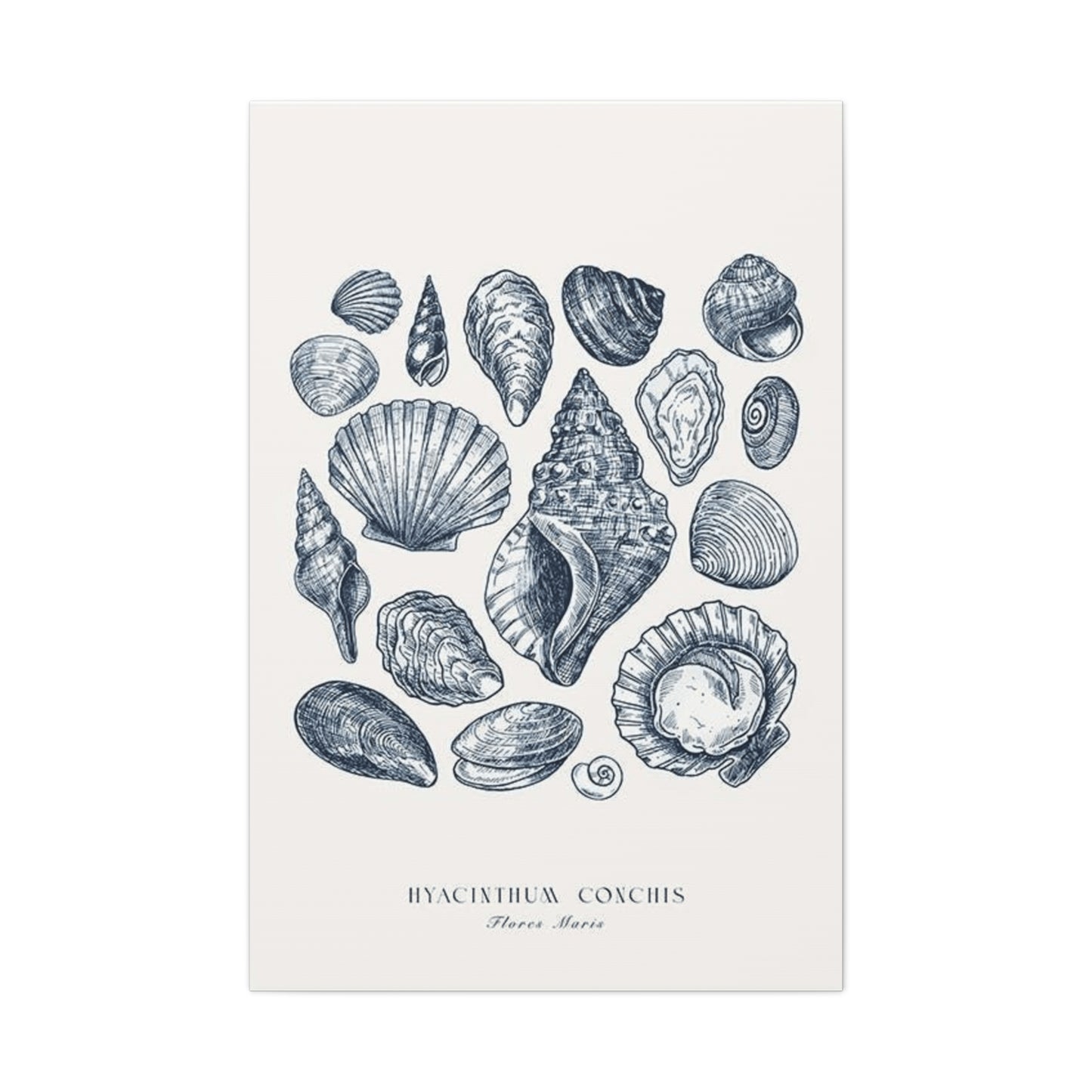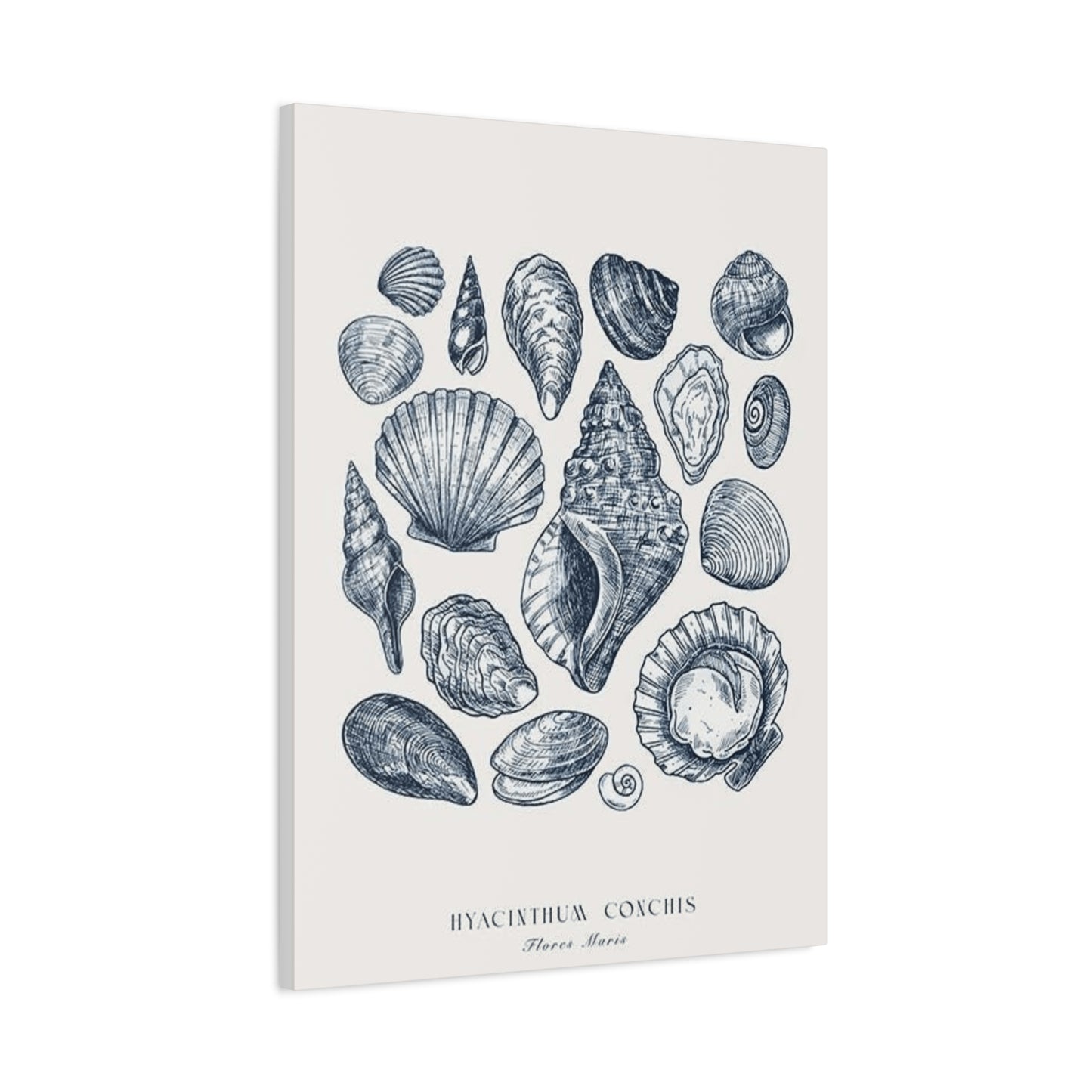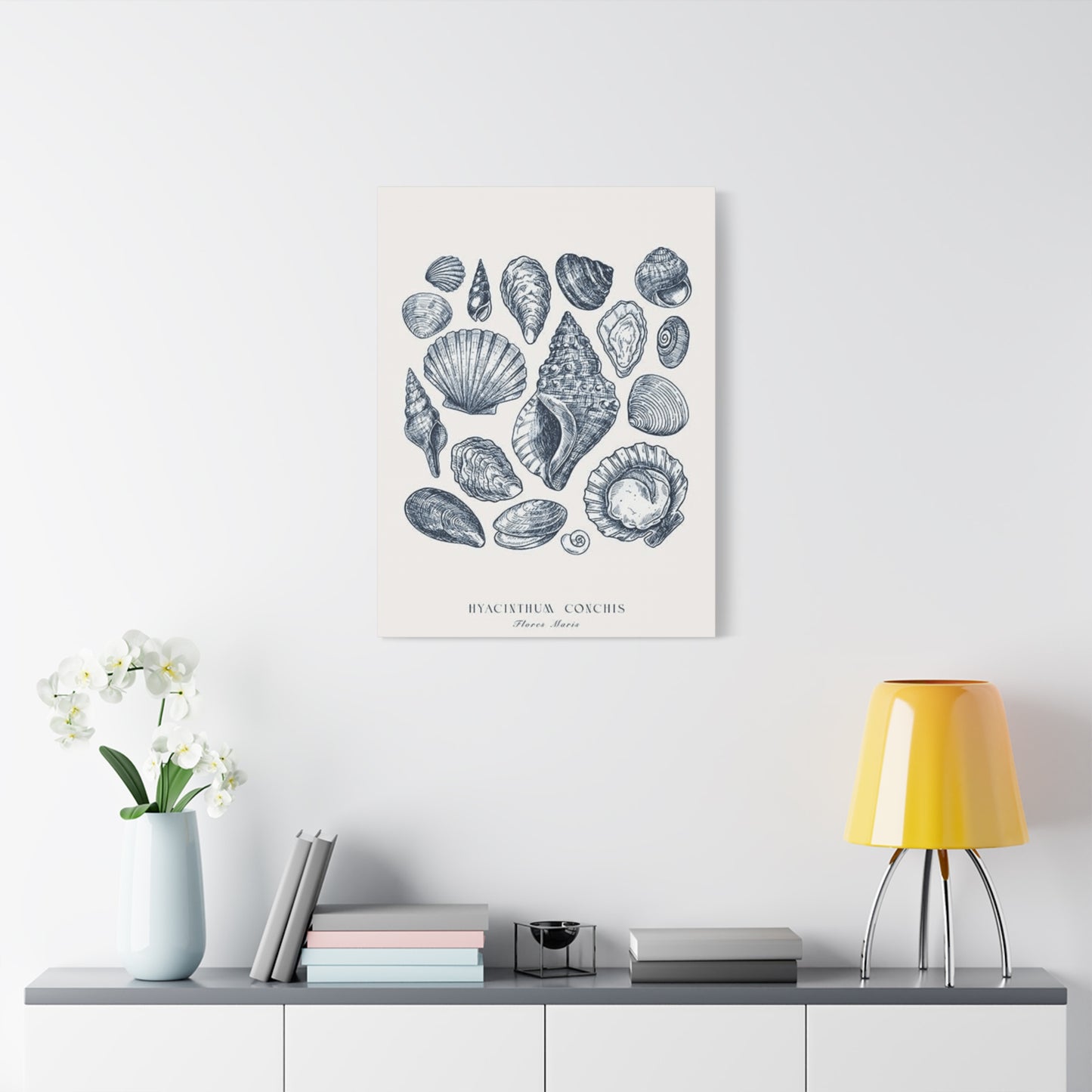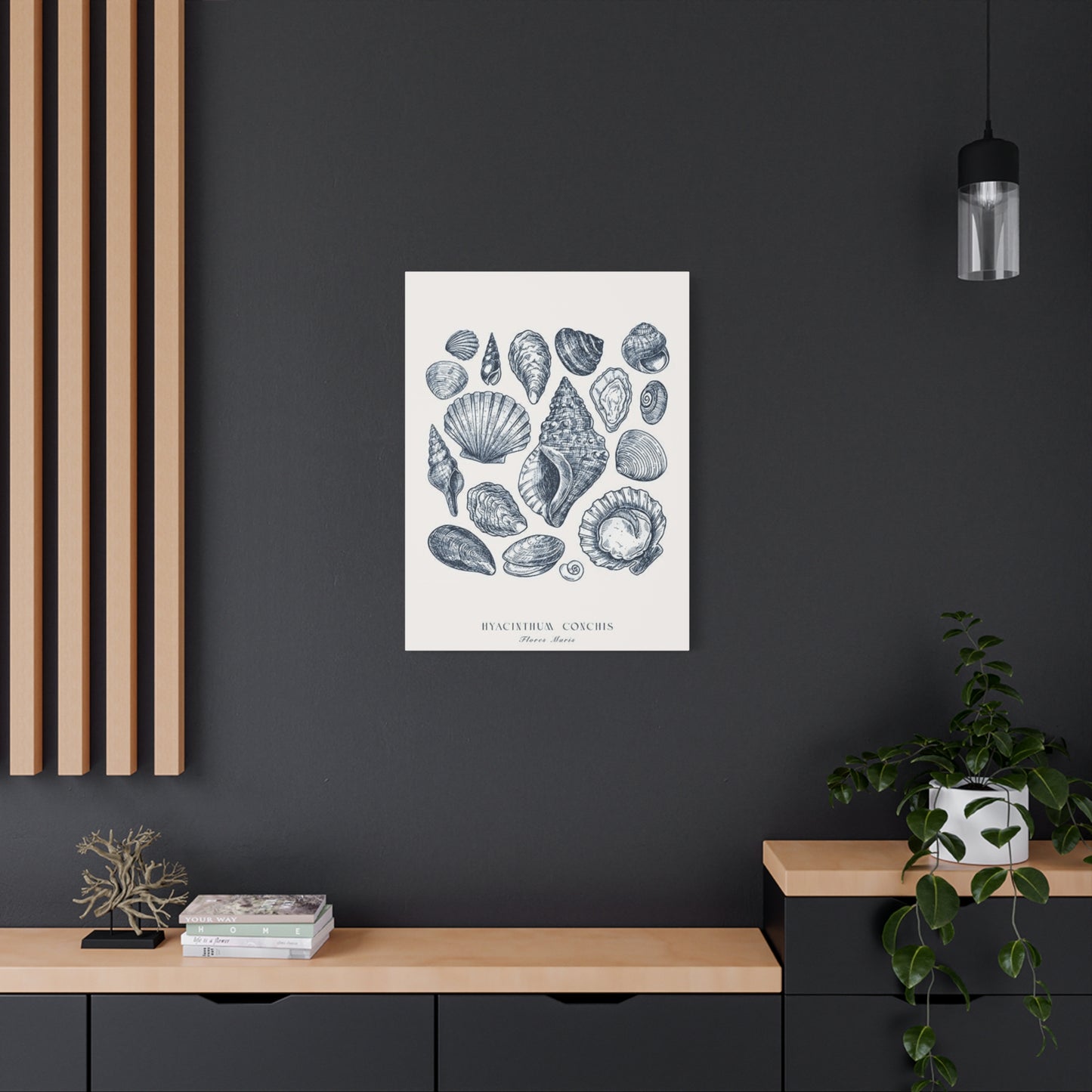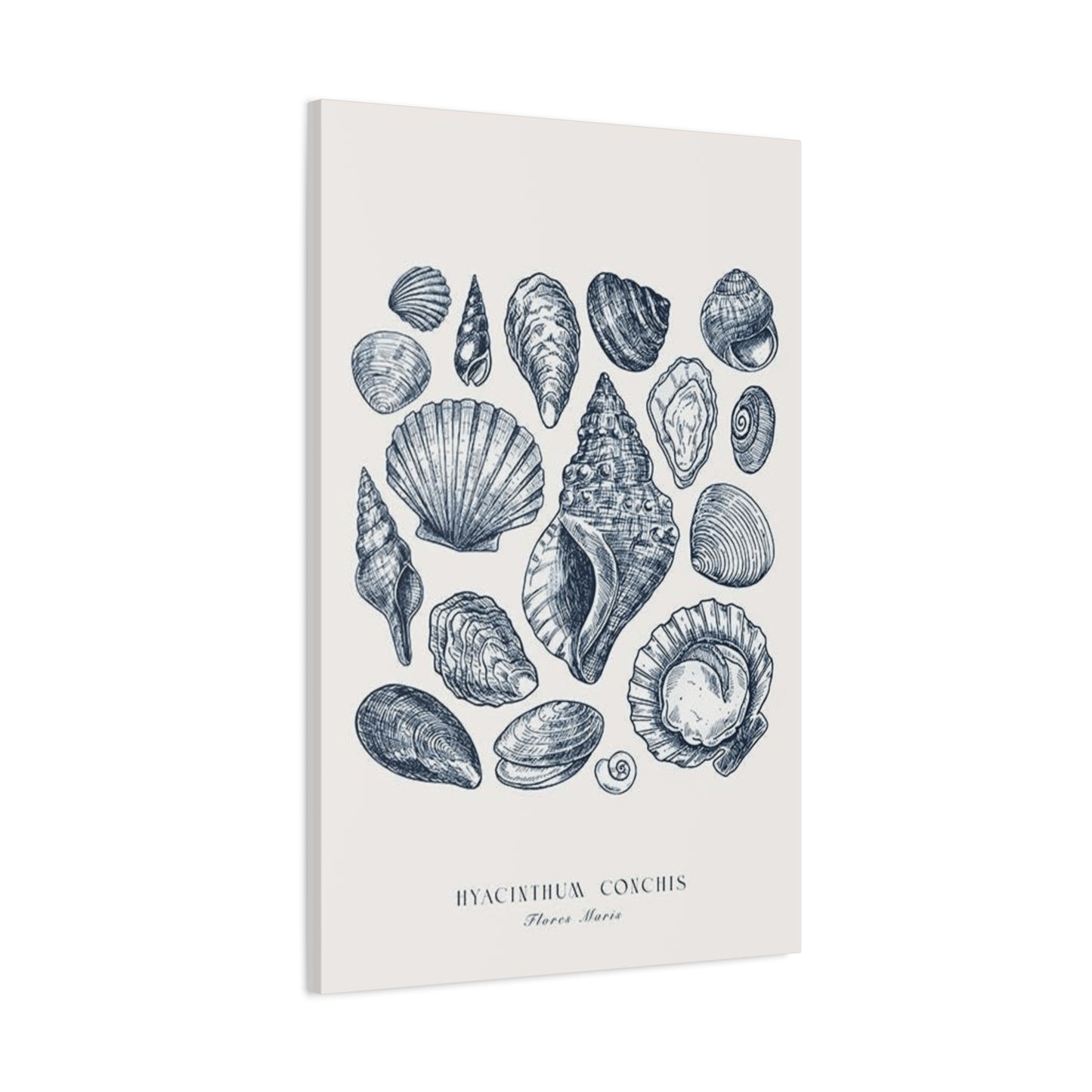Decorating with Ocean-Inspired Shell Wall Art: A Comprehensive Interior Design Resource
Shell wall art has emerged as one of the most captivating ways to infuse coastal charm and natural beauty into interior spaces. These decorative pieces draw inspiration from the ocean's treasures, offering homeowners and decorators a chance to create serene, beach-inspired environments regardless of their proximity to the sea. The appeal of shell-themed artwork lies in its versatility, ranging from subtle accents to bold statement pieces that anchor entire room designs. Whether you're looking to evoke memories of seaside vacations or simply appreciate the organic forms found in nature, shell wall art provides an accessible and elegant solution for enhancing your living spaces.
The growing popularity of coastal and beach house aesthetics has propelled shell wall art into the mainstream of interior design. These pieces work beautifully in various settings, from traditional beach cottages to contemporary urban apartments. The natural textures, soothing color palettes, and organic shapes associated with shells create an immediate sense of tranquility and connection to the natural world. As more people seek to bring elements of nature into their homes, shell wall art stands out as a sophisticated choice that balances aesthetic appeal with emotional resonance.
In this comprehensive resource, we'll explore the many facets of shell wall art, examining different styles, placement strategies, and design considerations. From understanding the inherent beauty of these ocean-inspired pieces to learning how to incorporate them into specific room types, this guide will provide you with the knowledge needed to make informed decisions about adding shell art to your home. We'll discuss everything from selecting the right size and style to combining different types of shell artwork for maximum visual impact.
Natural Beauty in Shell Wall Art
The inherent beauty of shells has captivated humans for thousands of years, and their translation into wall art form preserves this timeless appeal. Each shell species displays unique characteristics in terms of shape, texture, and coloration that make them ideal subjects for artistic interpretation. When transformed into wall art, these natural elements bring an authentic piece of the ocean into interior spaces. The organic curves, spiral patterns, and delicate ridges found in shells create visual interest that manufactured designs simply cannot replicate. This authenticity is what makes shell wall art so compelling to both designers and homeowners.
Shell wall art captures the essence of marine life in a way that feels both sophisticated and accessible. The natural variations in shell formations mean that no two pieces of shell art are exactly alike, even when they're part of a manufactured series. This uniqueness adds character to any room and ensures that your wall decor stands out as something special. The subtle imperfections and organic irregularities in shell shapes contribute to their charm, reminding viewers of lazy beach days and peaceful ocean waves. These pieces serve as daily reminders of nature's beauty and the calming influence of coastal environments.
The color palette naturally present in shells makes them incredibly versatile for various interior design schemes. From pristine whites and creamy ivories to soft pinks, gentle browns, and even hints of iridescent purples and greens, shells offer a range of hues that complement nearly any room color. These naturally muted tones create a soothing atmosphere that promotes relaxation and mental clarity. Unlike bolder artwork that demands attention, shell wall art tends to integrate seamlessly into existing decor while still adding visual interest and personality to the space.
The textures found in shell wall art provide another layer of visual and tactile appeal. Ridged surfaces, smooth curves, and rough edges create dimensional interest that flat prints cannot achieve. When light hits these varied textures throughout the day, the artwork takes on different appearances, creating a dynamic element in your decor. This changing quality keeps the art feeling fresh and engaging, even after years of daily viewing. The three-dimensional nature of actual shell pieces adds depth to walls, creating shadows and highlights that enhance the overall aesthetic.
Shell wall art also carries symbolic meanings that resonate with many people. Shells represent protection, femininity, and the journey of life in various cultural traditions. They symbolize the treasures found when we take time to explore and appreciate our surroundings. Incorporating shell art into your home can serve as a daily reminder to slow down, appreciate natural beauty, and maintain connection with the rhythms of the natural world. This deeper meaning adds another dimension to the decorative function of these pieces.
The sustainability aspect of shell wall art appeals to environmentally conscious consumers. Many shell art pieces are created using ethically sourced shells or high-quality reproductions that don't impact ocean ecosystems. This allows homeowners to enjoy coastal aesthetics without contributing to environmental harm. Some artisans even create shell-inspired pieces using recycled materials or sustainably harvested shells from beaches where they would otherwise be discarded. This eco-friendly approach aligns with modern values while still delivering beautiful, nature-inspired decor.
The timeless quality of shell wall art ensures that your investment will remain stylish for years to come. Unlike trendy decor that quickly feels dated, shells have been appreciated for their beauty across cultures and centuries. This enduring appeal means that shell art transcends temporary design fads, making it a wise choice for those who want decor that won't need frequent updating. The classic nature of shell motifs allows them to work with evolving design schemes, adapting to new color palettes and furniture styles as your tastes change over time.
Shell wall art also offers excellent value in terms of visual impact relative to cost. Whether you choose affordable prints or invest in handcrafted pieces, shell art delivers significant aesthetic enhancement without requiring enormous budgets. This accessibility makes coastal-inspired decor available to a wide range of homeowners, regardless of their decorating budgets. The variety of price points available means that everyone can find shell art that fits their financial parameters while still achieving the desired look and feel in their spaces.
Bring the Beach Inside with Shell Decor
Creating a beach-inspired atmosphere within your home becomes effortlessly achievable through the strategic use of shell decor. These ocean-themed elements instantly transport viewers to sandy shores and rolling waves, even when positioned in landlocked locations far from any coastline. The psychological impact of beach-inspired decor is well-documented, with studies showing that coastal imagery and natural elements can reduce stress and promote feelings of well-being. By bringing the beach inside through shell wall art, you're not just decorating your space but also creating an environment that supports mental health and emotional balance.
The sensory experience of the beach extends beyond visual elements, but shell wall art serves as an effective anchor for building a complete coastal atmosphere. When you look at well-executed shell artwork, your mind naturally fills in the rest of the beach experience—the sound of waves, the feel of sand, the scent of salt air. This mental association creates a powerful effect that transforms ordinary rooms into peaceful retreats. The presence of shell art can trigger positive memories of beach vacations and outdoor adventures, bringing those happy feelings into your daily life at home.
Shell decor works particularly well in homes where the overall design theme leans toward natural, organic, or coastal styles. However, the versatility of shell art means it can also serve as an effective counterbalance in more urban or modern settings. A carefully chosen shell piece in a minimalist apartment can soften hard edges and provide a connection to nature that the surrounding environment might lack. This flexibility makes shell wall art a valuable design tool for a wide range of interior aesthetics and personal preferences.
The process of selecting shell wall art for your home encourages you to consider your relationship with the ocean and natural environments. Do you prefer calm, serene beach scenes, or are you drawn to the dramatic power of crashing waves? Shell art comes in styles that represent both of these approaches and everything in between. Some pieces emphasize the delicate beauty of individual shells, while others capture the abundance and variety of beach finds scattered across the sand. Your choice of shell art reveals something about your personality and creates a space that feels authentically yours.
Layering different types of beach-inspired elements around your shell wall art enhances the coastal atmosphere. Natural materials like driftwood, rope, jute, and linen complement shell artwork beautifully, creating a cohesive beach house aesthetic. The key is maintaining balance—too many beach elements can feel themed rather than tasteful, while too few may not create the desired atmosphere. Shell wall art often works best as the focal point of beach-inspired decor, with other elements playing supporting roles that enhance rather than compete with the artwork.
The lighting in rooms featuring shell wall art significantly impacts the overall beach atmosphere. Natural light works best with these pieces, as it mimics the bright, airy quality of actual beach environments. If possible, position shell art near windows or in rooms that receive abundant daylight. For spaces with limited natural light, consider warm artificial lighting that creates a similar sunny ambiance. Avoid harsh, cool-toned lights that can make shell colors appear washed out or unappealing. The right lighting brings out the subtle variations in shell tones and textures, maximizing the visual impact of your artwork.
Seasonal rotation of shell wall art can keep your beach-inspired decor feeling fresh throughout the year. While shells work beautifully in all seasons, you might choose to emphasize them more heavily during spring and summer months when beach thoughts naturally come to mind. During colder months, shell art can serve as a cheerful reminder of warmer days ahead, providing visual warmth that counteracts gray skies and chilly weather. Some homeowners enjoy having multiple sets of shell art pieces that they rotate based on season or mood, keeping their decor dynamic and interesting.
The scale of shell wall art affects how effectively it brings the beach atmosphere indoors. Large, dramatic pieces make bold statements and can anchor entire room designs around coastal themes. Smaller pieces work well in groupings or as subtle touches that hint at beach inspiration without overwhelming the space. Consider the size of your room and the impact you want to create when selecting shell art. Bigger isn't always better—sometimes a collection of smaller shell prints creates more visual interest than a single large piece would in the same space.
Elegant Shell Prints for Coastal Vibes
Shell prints represent an accessible and versatile approach to incorporating ocean-inspired artwork into your home. These reproductions of shell photographs, illustrations, or paintings offer the beauty of shells without the maintenance concerns or fragility of actual shell pieces. High-quality shell prints can deliver stunning visual impact, especially when professionally printed on quality paper or canvas and properly framed. The elegance of shell prints lies in their ability to capture the finest details of shell structures, from the microscopic ridges to the subtle color gradations that make each shell unique.
The variety of styles available in shell prints ensures that every design preference can be accommodated. Photographic prints offer realistic representations that showcase shells exactly as they appear in nature. These work particularly well in spaces where authenticity and naturalism are priorities. Illustrated or painted shell prints provide artistic interpretation, ranging from watercolor softness to bold graphic designs. These stylized versions can complement specific design schemes more effectively than purely photographic approaches, allowing for greater flexibility in matching existing decor.
Vintage botanical print styles have become increasingly popular for shell artwork. These pieces mimic the scientific illustrations from centuries past, when naturalists would carefully document specimens in detailed drawings. The historical aesthetic of these prints adds sophistication and intellectual appeal to shell art, making them particularly suitable for studies, libraries, or traditional home interiors. The combination of scientific accuracy with artistic presentation creates pieces that are both beautiful and educational, appealing to those who appreciate learning about the natural world.
Modern interpretations of shell prints embrace contemporary design sensibilities, including minimalist compositions, abstract representations, and unexpected color treatments. These updated versions of shell art prove that coastal decor doesn't have to mean traditional or predictable design. A black and white shell print can feel striking and modern, while a shell print with unexpected color treatments might add a playful or artistic element to contemporary spaces. This range of interpretations means that shell prints can work in virtually any design context, from traditional to cutting-edge modern.
The framing of shell prints significantly impacts their overall appearance and the elegance they bring to a space. Simple, clean frames in natural wood tones or white finishes typically work best for maintaining a coastal aesthetic. However, more ornate frames can elevate shell prints for formal spaces, while frameless or floating mount presentations create contemporary looks. The mat board selection also matters—generous white or cream matting creates a gallery feel and draws attention to the print itself, while narrower or darker matting produces more intimate presentations.
Grouping multiple shell prints together creates gallery walls that deliver significant visual impact. The arrangement of these prints deserves careful consideration for maximum effectiveness. Symmetrical grids work well in formal spaces and create orderly, calming displays. Asymmetrical arrangements feel more organic and casual, better suited to relaxed living spaces or bedrooms. When grouping shell prints, consider using the same frame style throughout for cohesion, or mix frame styles intentionally for a collected-over-time appearance that adds character and personality.
The color coordination between shell prints and room decor determines how well the pieces integrate into existing spaces. Shell prints typically feature neutral color palettes, making them relatively easy to incorporate. However, paying attention to the specific undertones present in the prints helps ensure harmony with wall colors, furniture, and accessories. Cool-toned shells with hints of gray or blue work best in rooms with similar cool palettes, while warmer shells with beige or pink tones complement spaces decorated in warm colors. This attention to detail creates cohesive looks that feel intentional and professionally designed.
Placement height for shell prints follows general art hanging guidelines but should also consider the specific characteristics of your space. The center of the print should typically sit at eye level, approximately 57 to 60 inches from the floor. However, in rooms with unusually high or low ceilings, or in spaces where people will primarily view the art while seated, adjustments may be necessary. The goal is ensuring that viewers can comfortably appreciate the details and beauty of the shell prints without straining or feeling disconnected from the artwork.
Simple, Stylish Shell Wall Hangings
The appeal of simple shell wall hangings lies in their ability to make strong design statements without overwhelming spaces or budgets. These pieces embrace the principle that less is often more, focusing on clean lines, uncluttered compositions, and the inherent beauty of shells themselves rather than elaborate presentation. Simple shell hangings work exceptionally well in modern and minimalist interiors where every element must earn its place through both beauty and purpose. The streamlined nature of these pieces allows them to integrate seamlessly while still providing the desired coastal touch.
Stylish simplicity in shell wall hangings often manifests through monochromatic color schemes. All-white shell displays create cohesive, calming effects that suit bedrooms, bathrooms, and meditation spaces particularly well. The lack of color variation puts emphasis on form and texture, encouraging closer examination of the shells' natural architecture. Black-framed white shell prints or displays offer high contrast that creates graphic impact suitable for modern interiors. These striking combinations prove that shell art need not be soft or muted to be effective.
The concept of negative space plays a crucial role in simple shell wall hangings. Pieces that feature a single shell or small shell grouping against expansive plain backgrounds embody this principle. The empty space around the shells prevents visual clutter and creates a sense of calm and breathing room. This approach works particularly well in smaller spaces where busy artwork might feel oppressive. The restraint shown in simple shell hangings often creates more powerful impressions than elaborate pieces that try to incorporate too many elements.
Material choices in simple shell wall hangings contribute to their stylish appeal. Natural materials like light wood, linen, or cotton backgrounds enhance the organic quality of shells without competing for attention. Metal frames in brushed nickel, brass, or matte black provide contemporary edges that prevent shell art from feeling too soft or traditionally coastal. Glass or acrylic covers protect prints while maintaining clean, modern appearances. The careful selection of presentation materials ensures that simple shell hangings look intentional and sophisticated rather than unfinished or cheap.
The beauty of simple shell wall hangings includes their versatility in placement. These pieces work equally well standing alone as focal points or incorporated into larger gallery wall arrangements. Their uncomplicated nature makes them excellent supporting players in mixed media displays, where they can provide visual breathing room between busier pieces. This flexibility allows homeowners to start with simple shell hangings and build collections over time, adding pieces as budget and inspiration allow without committing to a complete design scheme from the outset.
Handmade simple shell hangings offer unique appeal that mass-produced items cannot replicate. Artisans who create minimalist shell pieces often bring exceptional attention to detail and quality that elevates these simple designs. The knowledge that a piece was individually crafted adds emotional value beyond the physical object. Many people find that supporting individual artists and craftspeople enhances their connection to their decor, making their homes feel more personal and meaningful. Handmade simple shell hangings often become conversation pieces that tell stories about where they were acquired and the artists who created them.
The maintenance requirements for simple shell wall hangings typically remain minimal, adding to their appeal for busy homeowners. Most pieces need only occasional dusting or gentle cleaning to maintain their appearance. This low-maintenance quality makes them practical choices for high-traffic areas or homes with children and pets. Unlike more elaborate shell arrangements that might require careful handling or specialized cleaning, simple hangings can be easily managed as part of regular home cleaning routines. This practical aspect shouldn't be overlooked when selecting wall art for real-life living spaces.
Simple shell wall hangings also excel at creating cohesion in open floor plans or homes where multiple rooms are visible from single vantage points. Because of their uncomplicated designs, these pieces can be repeated throughout connected spaces without creating monotony or visual confusion. A series of simple shell prints in consistent frames can guide the eye through a space, creating flow and unity. This technique works particularly well in modern homes where open concepts dominate architectural designs and traditional room separation has been minimized or eliminated.
Shell Art That Captures Ocean Calm
One of the most valuable qualities of shell art is its ability to evoke the peaceful, meditative atmosphere associated with ocean environments. The gentle lapping of waves, the rhythmic sounds of the sea, and the expansive horizons of coastal landscapes all contribute to a sense of calm that many people seek to recreate in their homes. Shell wall art serves as a visual representation of this tranquility, offering a focal point for meditation and relaxation. The organic forms and soft colors of shells naturally promote feelings of serenity, making them ideal for spaces dedicated to rest and rejuvenation.
The psychological impact of ocean-inspired imagery has been studied extensively, with research consistently showing that coastal scenes and natural elements reduce stress markers and promote relaxation responses. Shell art taps into these benefits by bringing ocean associations into indoor environments. When you spend time in a room decorated with calming shell art, your nervous system receives subtle signals that it's safe to relax. This physiological response happens almost automatically, below conscious awareness, as your brain recognizes patterns associated with peaceful natural settings. The accumulation of these small moments of calm throughout the day contributes to overall well-being and stress management.
Color selection in shell art significantly influences its calming qualities. Pieces featuring soft blues, sea greens, pale pinks, and sandy neutrals tend to create the most soothing effects. These colors are naturally associated with beaches and oceans, triggering mental connections to peaceful coastal experiences. Shell art dominated by these gentle hues works beautifully in bedrooms, where promoting restful sleep is paramount. The absence of stimulating bright colors or high contrast helps signal to the brain that the space is meant for relaxation rather than activity or alertness.
The composition and style of shell art also affect its ability to convey calmness. Pieces with balanced, symmetrical arrangements tend to feel more serene than asymmetrical or chaotic compositions. Soft-focus photography or watercolor-style illustrations of shells create dreamier, more tranquil impressions than sharp, highly detailed images. The presence of open space around shell subjects prevents visual crowding that can create subtle tension. These design elements work together to ensure that shell art truly promotes the peaceful atmosphere you're trying to create rather than inadvertently introducing visual stress.
Shell art that captures ocean calm works particularly well in specific functional spaces within the home. Bathrooms benefit enormously from this type of artwork, transforming utilitarian spaces into spa-like retreats. The natural association between water, shells, and bathing makes this placement feel logical and intentional. Bedrooms are another ideal location for calming shell art, where the goal is creating restful environments conducive to quality sleep. Home offices can also benefit from peaceful shell art, providing visual breaks during stressful work moments and helping to maintain mental balance throughout demanding days.
The size and scale of calming shell art deserve consideration for achieving the desired effects. Oversized pieces can feel dramatic rather than soothing, while very small pieces might get lost and fail to anchor the calming atmosphere. Medium-sized pieces or collections of smaller coordinating works often strike the best balance for promoting tranquility. The goal is creating sufficient visual presence to set the room's tone without overwhelming the space or creating stimulus overload. As with many aspects of design, moderation and balance typically yield the best results.
Incorporating actual shells alongside shell art can amplify the calming effects in your space. A bowl of collected shells on a nearby table, shell-shaped accessories, or driftwood pieces creates layers of ocean references that reinforce the peaceful coastal vibe. However, restraint remains important—the goal is creating subtle atmospheric effects rather than heavy-handed theme decor. The shell art should remain the primary focus, with these additional elements providing gentle reinforcement rather than competition. This layered approach to creating calm environments feels more sophisticated and ultimately more effective than single-element strategies.
The practice of mindful viewing can enhance the calming benefits of shell art. Rather than simply hanging a piece and forgetting about it, take occasional moments to truly observe the artwork. Notice the subtle color variations, the flowing lines, the textures and patterns. This brief meditation on the natural beauty represented in the art provides mental breaks from daily stressors. Some people find it helpful to pair this practice with deep breathing, using the shell art as a focal point for brief relaxation exercises. This intentional engagement with the artwork maximizes its value beyond mere decoration, turning it into a tool for active stress management and wellness.
Add Texture with 3D Shell Pieces
Three-dimensional shell art pieces offer tactile and visual dimensions that flat prints simply cannot achieve. These sculptural elements add physical depth to walls, creating shadow play and textural interest that changes throughout the day as light angles shift. Actual shells mounted on backing boards, resin castings that preserve shell forms, or mixed media pieces incorporating shells with other materials all fall into this category. The dimensional quality of these pieces creates more dynamic wall displays that engage viewers on multiple sensory levels beyond simple visual appreciation.
The textural variety available in three-dimensional shell pieces provides endless design possibilities. Rough, naturally weathered shells create rustic, beachy feels appropriate for casual coastal decor. Polished, pristine shells offer more refined aesthetics suitable for elegant spaces. Combinations of different shell types and textures within a single piece create visual interest and complexity that rewards repeated viewing. The physical texture invites touch, creating interactive elements in your decor that flat art cannot provide. This tactile quality especially appeals to people who appreciate hands-on engagement with their surroundings.
Shadow boxes represent a popular format for three-dimensional shell displays. These enclosed frames allow shells to be arranged in attractive compositions while protecting them from dust and damage. The depth of the shadow box creates literal dimensional space that enhances the sculptural qualities of the shells. Background treatments within shadow boxes can range from simple neutral fabric to sand, weathered wood, or even painted scenes that provide context for the shells. This format offers excellent protection for delicate shells while presenting them in attractive, display-worthy ways.
Mounted shell arrangements that attach directly to walls without protective coverings create more organic, free-form displays. These pieces often have a collected, casual feel that works well in beach houses or relaxed living spaces. The absence of glass or framing allows the shells' natural textures to remain fully visible and accessible. However, this exposure also means the shells require more regular dusting and are more vulnerable to damage. The trade-off between accessibility and protection should factor into decisions about which type of three-dimensional shell art to incorporate into your spaces.
Mixed media pieces that combine shells with other materials create unique artistic statements. Shells paired with driftwood, rope, sea glass, or other beach finds create cohesive coastal compositions. Some artists incorporate shells into abstract or contemporary designs using unexpected materials like metal, concrete, or even fiber arts. These innovative combinations push shell art beyond traditional boundaries, proving that coastal decor can be edgy, modern, or artistic rather than predictable. Mixed media shell pieces appeal to homeowners who want ocean-inspired decor that reflects personal artistic sensibilities.
The weight and mounting requirements of three-dimensional shell pieces deserve consideration during selection and installation. Heavier pieces require appropriate wall anchors and hanging hardware to ensure secure attachment. Assessing your wall type and selecting appropriate mounting solutions prevents damage to both walls and artwork. Some three-dimensional pieces may be too heavy for certain wall surfaces, requiring alternative placement on shelves or mantels instead of wall mounting. These practical considerations should inform your purchasing decisions to avoid disappointment when attempting to install pieces in your chosen locations.
Lighting strategies can dramatically enhance the impact of three-dimensional shell pieces. Directional spotlights or picture lights create dramatic shadows that emphasize the dimensional qualities of the shells. Natural light from windows creates changing effects throughout the day as sun angles shift. Even ambient room lighting creates subtle shadow effects that give three-dimensional pieces more presence than flat art. Considering lighting when placing these pieces ensures you maximize their visual impact and take full advantage of their sculptural qualities.
The maintenance of three-dimensional shell pieces varies depending on their construction and finish. Sealed or protected pieces typically require only periodic dusting with soft brushes or cloths. Unprotected shells may need more careful cleaning and occasional treatments to prevent deterioration. Understanding the care requirements before purchasing helps ensure that you select pieces compatible with your lifestyle and maintenance preferences. Beautiful art that becomes a burden due to excessive care requirements ultimately doesn't serve its purpose of enhancing your living environment, so honest assessment of your maintenance willingness is important.
Soft Neutrals Meet Shell Elegance
The pairing of soft neutral color palettes with shell artwork creates sophisticated, timeless interior designs. Neutral colors provide perfect backdrops that allow the subtle beauty of shells to shine without competition from bold walls or busy patterns. Whites, creams, beiges, soft grays, and gentle taupes all work beautifully with shell art, creating cohesive looks that feel calm, elegant, and refined. This combination never feels dated or trendy, ensuring that your design investment remains stylish for years. The understated nature of neutral-and-shell pairings appeals to people who appreciate quiet luxury and restrained beauty.
Shell elegance naturally complements the neutral palette trend that has dominated interior design in recent years. As homeowners move away from bold accent walls and colorful furniture toward more subdued, nature-inspired schemes, shell art fits perfectly into these evolving aesthetics. The organic forms and gentle colors of shells enhance neutral rooms without introducing jarring elements. This harmony between shell art and neutral decor creates peaceful, flowing spaces that feel cohesive and thoughtfully designed rather than collected haphazardly over time.
Layering different shades within the neutral family adds depth and interest to rooms featuring shell art. Combining warm creams with cool grays, or mixing various beige tones creates dimensional color schemes that avoid monotony. Shell art often contains multiple neutral tones within a single piece, making it an ideal tool for tying together these varied shades. The natural color variations in shells provide a model for successful neutral layering, demonstrating how multiple subtle tones can coexist beautifully within cohesive compositions. Following the lead of nature itself rarely results in color scheme failures.
Texture becomes especially important in neutral and shell-based design schemes. Without bold colors to create visual interest, textural variety must carry that load. The natural texture of shells provides an excellent starting point, but should be supported by varied fabrics, finishes, and materials throughout the room. Nubby linen upholstery, smooth leather accents, rustic wood furniture, and plush area rugs all contribute textural layers that prevent neutral rooms from feeling flat or boring. Shell art participates in this textural strategy, especially when three-dimensional pieces are chosen that provide literal tactile variation.
The metal finishes in neutral rooms featuring shell art should be chosen carefully to maintain color harmony. Warm metals like brass, gold, and copper complement cream and beige neutrals beautifully while adding subtle luxury. Cool metals like brushed nickel, chrome, and silver pair better with gray-based neutral schemes. Mixed metals can work if managed thoughtfully, but typically one metal family should dominate to maintain cohesion. The frames or display methods for shell art should follow these metal tone guidelines, ensuring the pieces integrate smoothly into the overall design rather than standing out as afterthoughts.
Natural materials beyond shells enhance the organic feel of neutral, shell-focused interiors. Wood in various finishes, stone, jute, rattan, and live plants all reinforce the nature-inspired direction. These materials share the same restrained color palette as shell art, creating cohesive looks without requiring exact color matching. The shared natural origins of these elements create intuitive connections that feel right even without formal design knowledge. Rooms that successfully combine shells with other natural materials often feel more authentic and lived-in than spaces that rely on a single decorative theme.
The risk of neutral and shell combinations feeling too bland or safe can be managed through thoughtful design choices. While the overall palette remains understated, introducing varying pattern scales adds visual interest. Large-scale patterns in area rugs or curtains, medium patterns in upholstery, and small patterns in throw pillows create layered visual complexity. Ensuring strong contrasts in value—pairing light creams with deeper taupes or charcoals—prevents the washed-out appearance that sometimes plagues overly neutral schemes. Shell art typically occupies the light-to-medium value range, so incorporating darker elements elsewhere in the room creates necessary balance.
Personal touches prevent neutral and shell designs from feeling generic or hotel-like. While neutral palettes and shell art work beautifully together, spaces need distinctive elements that reflect the inhabitants' personalities. Family photos, treasured collections, unique furniture pieces, or original artworks alongside the shell pieces create homes rather than showrooms. The beauty of neutral and shell-based designs is that they provide excellent frameworks that support rather than compete with these personal elements. Think of the neutral palette and shell art as the canvas upon which you paint your life, not as the completed picture itself.
Framed Shell Art for Relaxed Rooms
Framed shell art brings a sense of finish and intentionality to relaxed room designs. The frame elevates simple shell prints or photographs into proper artwork, signaling that the piece has value and deserves attention. However, in relaxed spaces, framing should enhance rather than formalize the art. Casual frame selections in natural materials keep the vibe comfortable and unpretentious. The right frame protects the artwork while supporting the laid-back aesthetic you're trying to create. This balance between protection and informality makes framed shell art perfect for family living spaces where both style and comfort matter.
Frame material selection significantly impacts how formal or relaxed shell art appears. Natural wood frames in light finishes like oak, ash, or maple create casual, beachy feels appropriate for relaxed rooms. Distressed or weathered frame finishes add to the informal atmosphere while providing interesting texture. Simple metal frames in matte finishes offer contemporary casual looks that work in modern relaxed spaces. Avoid overly ornate frames, high-shine finishes, or very wide frames that create formal appearances unsuited to comfortable, laid-back rooms. The frame should be attractive but should never upstage the shell art itself.
Mat board choices affect both the preservation of the artwork and its visual presentation. In relaxed rooms, wider mats create gallery-style presentations that make even simple shell prints feel important. Cream or off-white mats work better than pure white in casual spaces, as they feel warmer and less stark. Some shell art benefits from natural linen or fabric matting that adds texture and reinforces organic, relaxed aesthetics. Double matting in coordinating neutral tones adds subtle sophistication without formality. The mat should provide visual breathing room around the shell image while maintaining the comfortable feel of the space.
Placement of framed shell art in relaxed rooms can follow traditional guidelines or break rules for more casual effects. Formal centered placement above sofas or beds creates organized looks even in comfortable spaces. However, slightly off-center or asymmetrical placements can enhance the relaxed vibe, suggesting that the art was hung intuitively rather than measured precisely. Leaning framed shell art on shelves or mantels instead of hanging creates even more casual presentations that work beautifully in relaxed living spaces. This approach also offers flexibility, allowing you to easily rearrange pieces as your mood changes.
Gallery wall arrangements of framed shell art suit relaxed rooms when executed with casual approaches. Asymmetrical arrangements feel more comfortable than rigid grids. Mixing frame sizes and even mixing shell art with other coastal or natural subjects creates collected-over-time appearances that suit informal spaces. Maintaining consistent frame styles or colors creates enough unity to prevent the display from looking disorganized while still feeling casual. The beauty of gallery walls in relaxed rooms is that they can evolve over time, with pieces added or rearranged as you discover new art or your tastes evolve.
Protective glass or acrylic on framed shell art serves practical purposes in relaxed, well-used rooms. These covers protect prints from dust, moisture, and accidental damage that occur more frequently in family living spaces. UV-protective glazing prevents fading over time, especially important in rooms with significant sunlight exposure. Non-glare options reduce reflections that can interfere with viewing pleasure. While these protective measures add to frame costs, they're worthwhile investments for artwork you want to enjoy for years. The protection allows you to place shell art confidently in any room without worrying about environmental factors compromising its appearance.
DIY framing options appeal to budget-conscious homeowners who want framed shell art in relaxed rooms. Ready-made frames from home goods stores can work beautifully if selected carefully. Standard frame sizes make this approach more feasible, so choosing or printing shell art in common dimensions simplifies the process. Many online printing services offer affordable shell prints in sizes that match readily available frames. This DIY approach allows you to create custom framed shell art at a fraction of custom framing costs. The slight imperfections of self-framing actually suit relaxed rooms better than overly perfect professional framing might.
Seasonal rotation of framed shell art keeps relaxed rooms feeling fresh and interesting throughout the year. Having multiple framed pieces that you swap out based on season or mood prevents decorative stagnation. Store off-season pieces carefully in cool, dry locations to preserve them between rotations. This rotation strategy allows you to own more art than you can display simultaneously, creating variety without cluttering your walls. The flexibility particularly suits relaxed rooms where experimentation and change are welcome parts of the decorating process. Think of your framed shell art collection as a wardrobe for your walls, offering different options for different occasions and moods.
Minimalist Shell Designs for Modern Homes
Minimalist shell designs embody the principle that restraint creates power. These pieces strip away excess, focusing on essential forms and allowing individual shells to make maximum impact. In modern homes where clean lines and uncluttered spaces dominate, minimalist shell art fits perfectly into existing aesthetics. The organic curves of shells provide natural relief from the angular geometry typical of modern architecture without introducing chaos or visual noise. This balance between natural and designed, curved and linear, creates dynamic tension that makes minimalist shell art particularly effective in contemporary settings.
The color palettes of minimalist shell designs typically remain strictly limited. Monochromatic schemes dominate, with all-white, all-black, or grayscale presentations being most common. These restricted palettes create visual calm while emphasizing form over color. Some minimalist shell pieces incorporate single shell specimens against stark plain backgrounds, allowing viewers to focus completely on shape and structure. The absence of decorative flourishes or complex compositions directs attention to the inherent beauty of the shells themselves, making powerful statements through understatement rather than elaboration.
Conclusion
Bringing the ocean’s tranquility into your living space is not just a matter of style—it’s a way of creating balance, peace, and connection with nature’s most timeless beauty. Ocean-inspired shell wall art achieves this effortlessly, blending coastal elegance with the soothing rhythm of the sea. Whether it’s the delicate spiral of a conch, the textured charm of a scallop shell, or the shimmering tones of coral-inspired patterns, these pieces transform ordinary walls into living reflections of coastal serenity. Each design tells a story of calm waters, sunlit shores, and the simple beauty found in nature’s smallest details.
Shell wall art holds a special power—it evokes both nostalgia and escape. The gentle forms and organic patterns remind us of quiet walks along the beach, of waves lapping against the sand, of sunlight dancing on the water’s surface. When displayed indoors, these visual memories carry the essence of the sea into your home, turning it into a sanctuary of relaxation and renewal. This art doesn’t just decorate—it soothes. It encourages you to slow down, breathe deeply, and immerse yourself in the tranquil rhythm of coastal life.
What makes shell wall art so captivating is its versatility. It complements a wide range of interior design styles, from modern minimalism to rustic seaside charm. In coastal-themed rooms, shell prints and textured artworks reinforce the natural palette of whites, tans, aquas, and blues, creating a sense of continuity and calm. In contemporary spaces, metallic shell sculptures or abstract shell patterns add sophistication and texture without overwhelming the design. Even in traditional or bohemian interiors, shell motifs introduce organic warmth, grounding the décor with natural beauty. The result is a harmonious environment that feels effortlessly elegant and endlessly inviting.
Beyond its visual appeal, ocean-inspired shell wall art also carries symbolic meaning. Throughout history, shells have represented protection, transformation, and the cyclical nature of life. They are shaped by time and tide—refined through patience and persistence, much like the process of creating a beautiful home. Hanging shell art on your walls can serve as a quiet affirmation of growth, resilience, and grace. Each curve and contour tells a story of strength softened by nature’s touch—a balance that mirrors our own journey through life.
For those seeking to create a spa-like or meditative environment, shell wall art is particularly effective. Its soft hues, flowing lines, and natural textures work together to evoke feelings of calm and clarity. Pairing it with natural materials like driftwood, linen, and stone enhances the sensory experience, turning a simple wall into a coastal retreat. When combined with warm lighting or subtle ocean tones, the effect becomes immersive—an escape into serenity within the comfort of your own home.
Additionally, shell art can serve as a focal point that defines the mood of a space. A large framed print of a seashell close-up can bring drama and sophistication to a modern living room, while a gallery wall of smaller shell illustrations can create a charming, curated feel in a hallway or bedroom. Sculptural shell pieces, especially those made from ceramic, glass, or resin, add dimension and elegance to entryways or dining areas. The variety of available designs ensures that every homeowner can find a piece that resonates with their aesthetic and emotional connection to the sea.
On a deeper level, incorporating ocean-inspired art into your décor reflects a longing for balance—the calmness of the sea against the chaos of daily life. Shell wall art offers a visual reminder to remain centered and graceful amid constant movement. Its organic forms and soothing colors encourage mindfulness and relaxation, helping transform your home into a space that restores the spirit as much as it pleases the eye. It reminds us that beauty does not always shout; sometimes, it whispers softly through nature’s delicate design.









